Related Tags
How to get the Stevie Ray Vaughan tone on any budget
With the help of SRV expert and Peach Guitars head honcho John Priest, we’ve compiled the ultimate signal chain to get you sounding like SRV – whether you’re splashing the cash or keeping it tight.
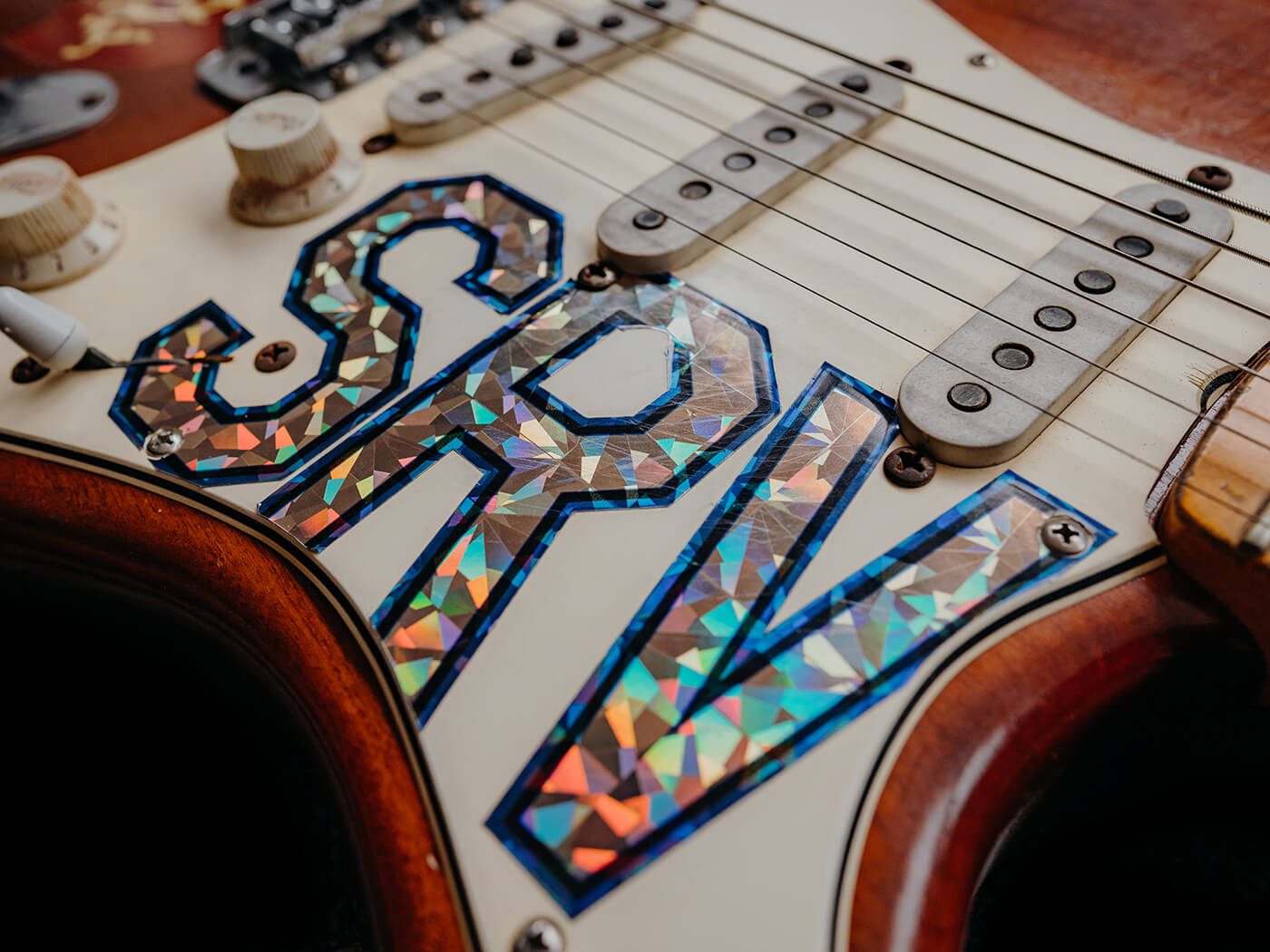
All images: Peach Guitars
John Priest is the owner of Peach Guitars in Colchester, but in addition to being the custodian of Britain’s largest guitar showroom, his passion is Stevie Ray Vaughan. John was first bitten by SRV’s bug as a kid, and summarily has, “spent years and years trying to nail that tone”. Here he shares his hard-earned wisdom about what you really need to capture that Stevie Ray sound yourself, and picks out some exemplar rigs that will get you close…
“I was about 11 or 12. My dad had a ‘greatest hits of the blues’ album, and it had Stevie’s version of Commit A Crime on it. That was the thing that first made me sit up and listen to all of the different aspects of his playing and tone.”
John Priest is thinking back to the moment that he first encountered Stevie Ray Vaughan’s guitar playing, but for a man who has subsequently devoted a fair amount of time, effort and hard-earned cash in the pursuit of nailing that most sought-after tone, he wasn’t as hooked as you’d expect. A paid-up Hendrix obsessive at that point, he was suitably intrigued, but it wouldn’t be until his dad came home with a copy of Couldn’t Stand The Weather, and he experienced Stevie’s take on, Voodoo Child (Slight Return).
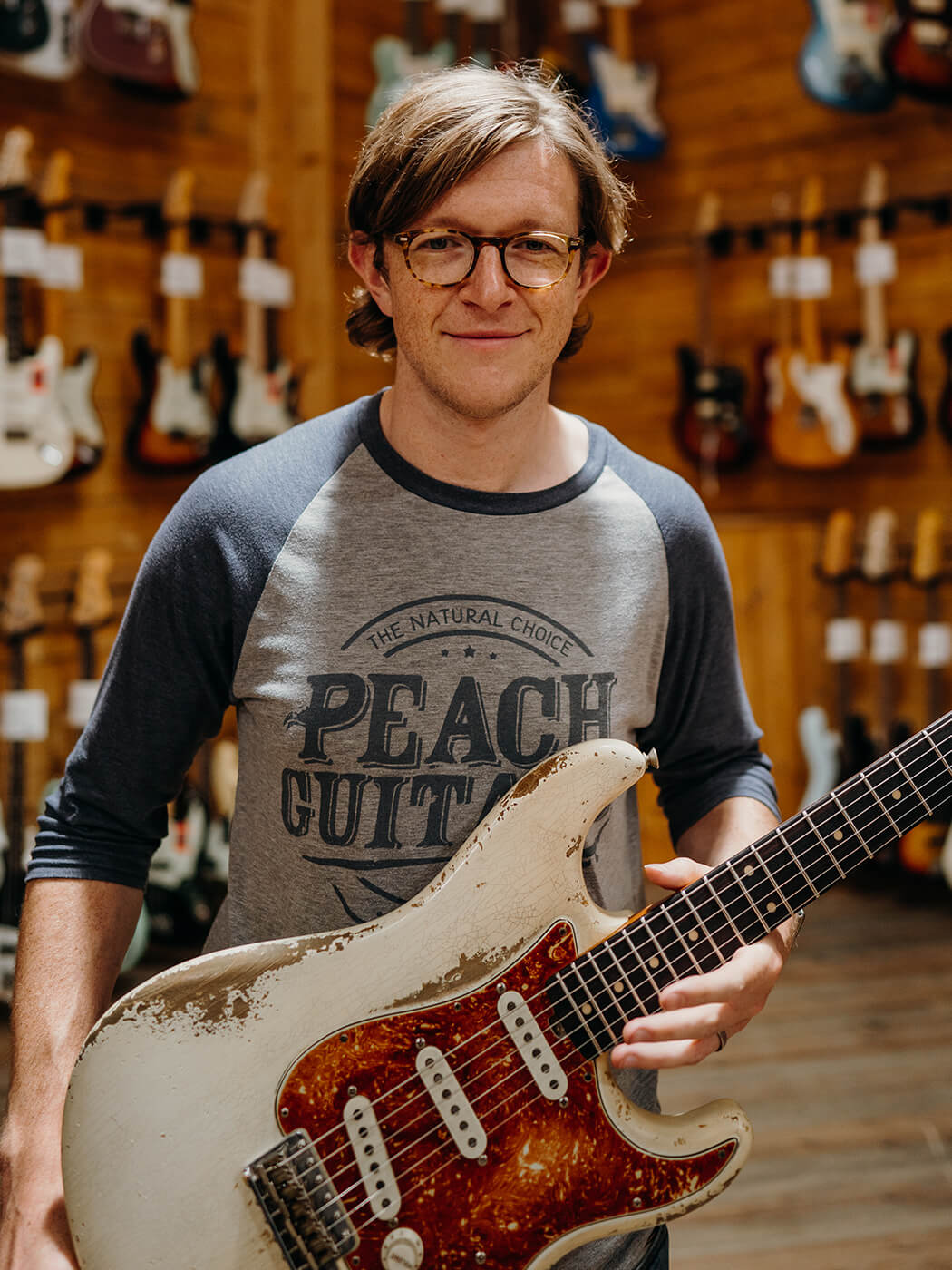
“It was the fact that it wasn’t a direct rip-off of Jimi’s version, it really was a Stevie version of it,” John reflects. “I think when other guys try to sound like other guitarists, they can get really close, and they nail the sound, the vibe and all that. But when Stevie did it – when he was taking off Albert King and Hendrix and Lonnie Mack – it still sounded exactly like him, which is the biggest thing about why I love his playing and his tone and everything so much.
“No matter what he does, no matter what guitar and gear he played, it always sounded like him. There was just a passion and expression in his playing – he managed to get the tone, the soul and the technique all into one, and I think that’s the main reason that I still love listening to his playing today.”
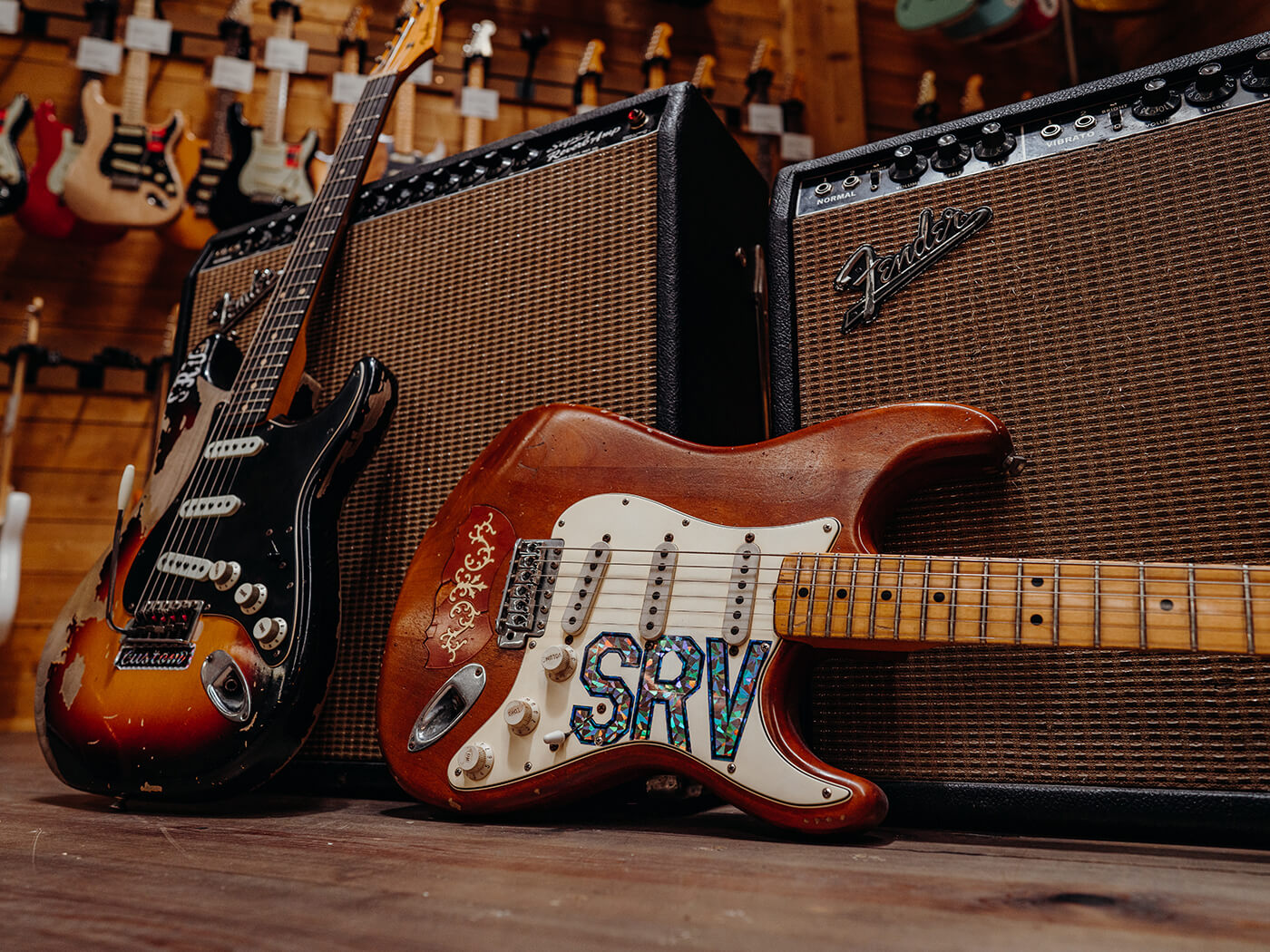
The secrets of SRV’s tone
For decades now, players, gear companies and everyone in between have been trying to nail the recipe of gear, playing style and feel that gave Stevie Ray’s guitar tone that wonderful mix of power and shimmer. As someone who has spent more time than most devoting himself to both sounding and playing like SRV, John has a few notes of caution for people who might be just diving into this world.
“I think a lot of people – probably myself included! – try and learn too fast,” he explains. “They try to do Scuttle Buttin’ at the first attempt and then fail. In terms of the sound, you really have to back that gain off – there’s so little compression in his sound. People tend to mask their sound with gain and EQ and compression, but that sound really does come from turning an amp up loud and hitting it with a pedal. As soon as you use too much compression and make it easy for yourself, that’s when you don’t get the huge tone that he’s known for.”
Indeed, if you really want to nail that SRV tone, you might have to make yourself decidedly harder than many of us are used to, and you’ll need a hell of a lot of volume to get there…
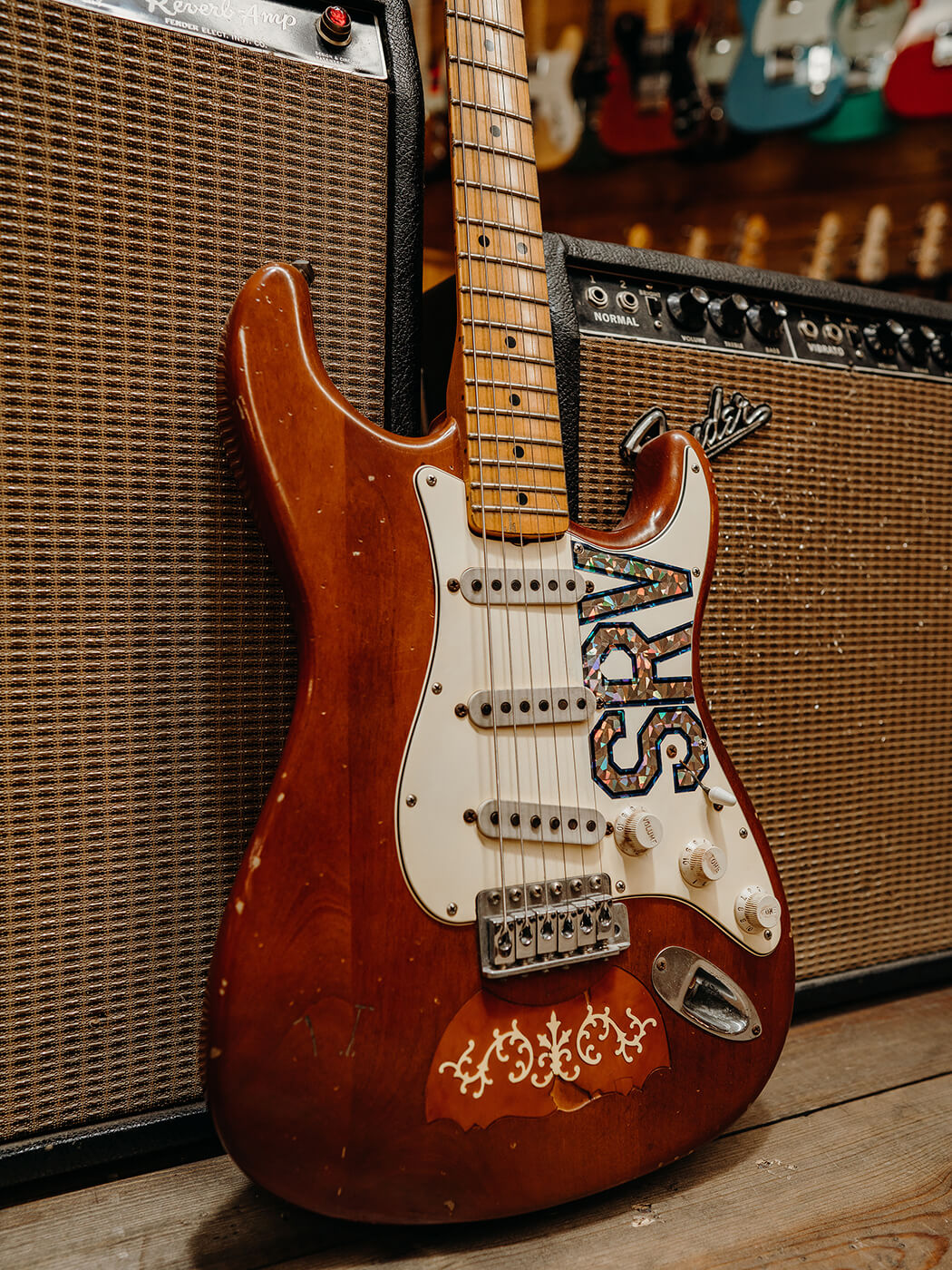
“It’s is a very hard sound to play with, because it’s all about power stage drive rather than preamp gain,” says John. “You can get some passable tones at home at low volumes if you do crank the gain up a little bit more, but when you turn the amp up, if you’re using too much gain, you don’t get the dynamics of his sound.
“His best-ever tone for me is on Live At The El Mocambo, when he’s got the two Fender amps – the Vibroverb and the Super Reverb and that’s about it – he’s basically just using a Tube Screamer and he’s getting so much out of the guitar, just through power stage drive from the amps, and then just hitting the Tube Screamer harder when he wants a little bit more volume and a little bit of extra give up the high-end past the 12th fret.”
Another key component of the SRV tone, is perhaps the most commonly debated, but perhaps the easiest to try for yourself – super heavy strings.

“You’ve got to have the big strings, and it’s got to be tuned to E♭,” John insists. “In fact, the tuning is the biggest part. If you don’t want to go to the 0.013-0.058s that Stevie used, even if you just use 0.010s, I think when you tune down to E♭ it just gives you that extra low-end punch, and it definitely shifts the frequency of the treble down a bit so you get that brightness without it being so harsh. Then you’ve got to get the amp to the point where it’s just on the edge of breaking up, and then hit it with a low-gain overdrive.”
The SRV shopping list
As befits a someone who owns one of Britain’s most respected guitar stores, it’s perhaps unsurprising that John also has plenty of advice about what gear you should buy if you’re really trying to nail the Stevie Ray Vaughan tone, and so it wasn’t hard for him to sit down and pull together two exemplar rigs that will get you as close as possible.
One of them, is for the discerning SRV aficionado prepared to drop serious cash on a rig, the other for someone looking to capture the essence of his tone on a budget, but they have one thing in common – they’ll both get you closer to that sound you’ve been chasing.
Guitars
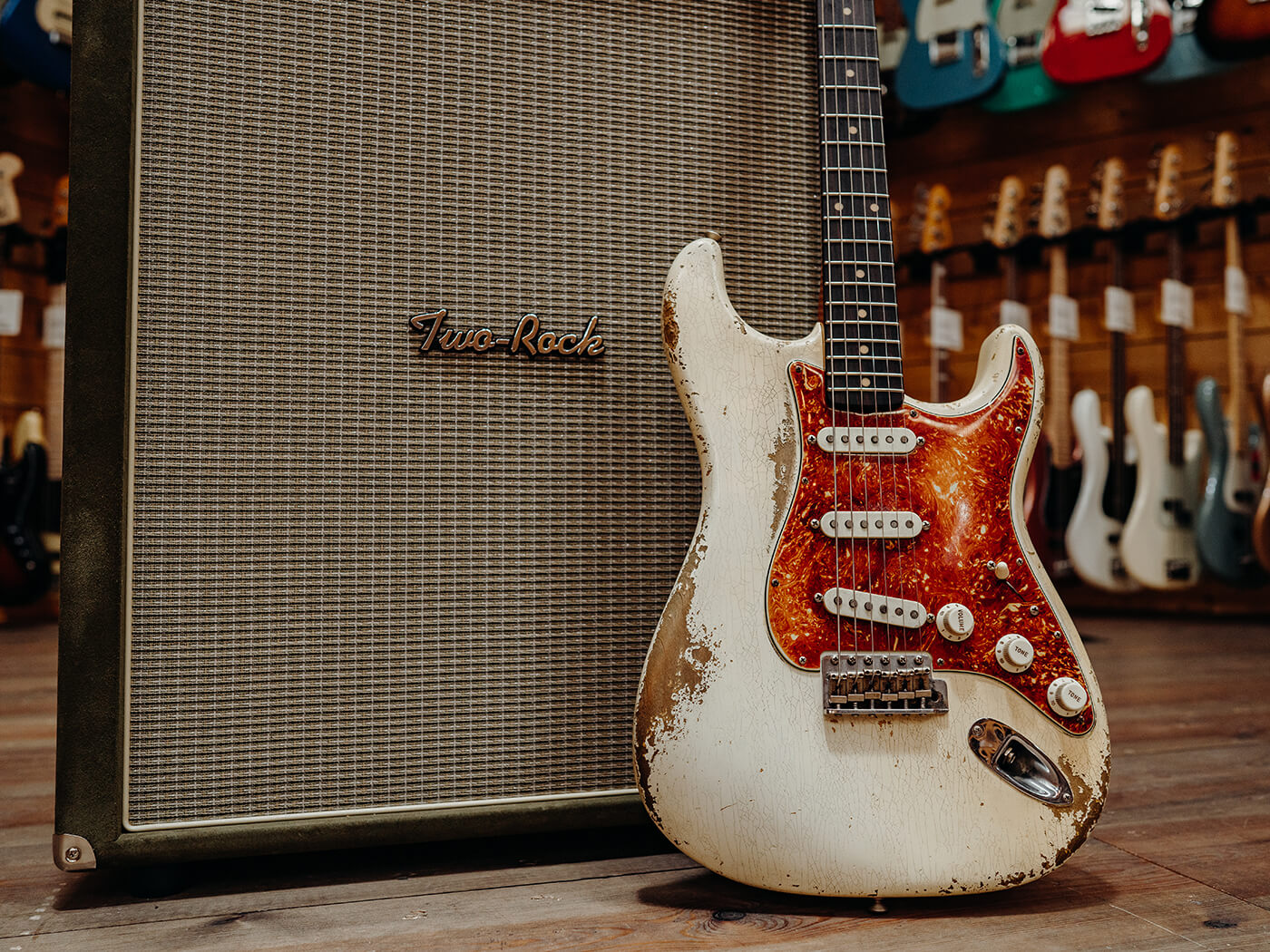
For the high-end rig, the guitar choice seems slightly incongruous. After all Fender Custom Shop has made a variety of SRV guitars over the years (many of which John owns or has owned), so his choice of a regular Custom Shop 60s Strat is somewhat surprising.
“I just wanted to use a more standard 60s-style Strat to show that it can nail that kind of tone,” John explains. “You just need a good, 60s-style Strat with a rosewood fingerboard and some fairly low-output pickups. And you need some big frets so you can string the guitar up with some heavier strings, and it makes that playing style a little bit easier. If you try to use heavy strings with a 7.25-inch radius and vintage frets you’re really going to struggle, but if you have the big frets and a slightly flatter radius it really suits those big heavy strings.”

At the less expensive end of the scale, John’s picked Fender’s Player Stratocaster, and despite its humble price, it’s a guitar that has loads to offer the SRV wannabe.
“I chose that because the alnico pickups sound great in them, they’ve got a really nice chime, and respond really well to overdrive as well,” says John. “Plus they’ve got slightly larger frets, and a player-friendly radius on the fingerboard, so if you do wanna use those heavier strings then it’s going to be able to get in the ballpark. I just think they’re really good value guitars, they play really well and I would have loved to have had that as my first SRV-style Strat, that’s for sure!”
Amplifiers
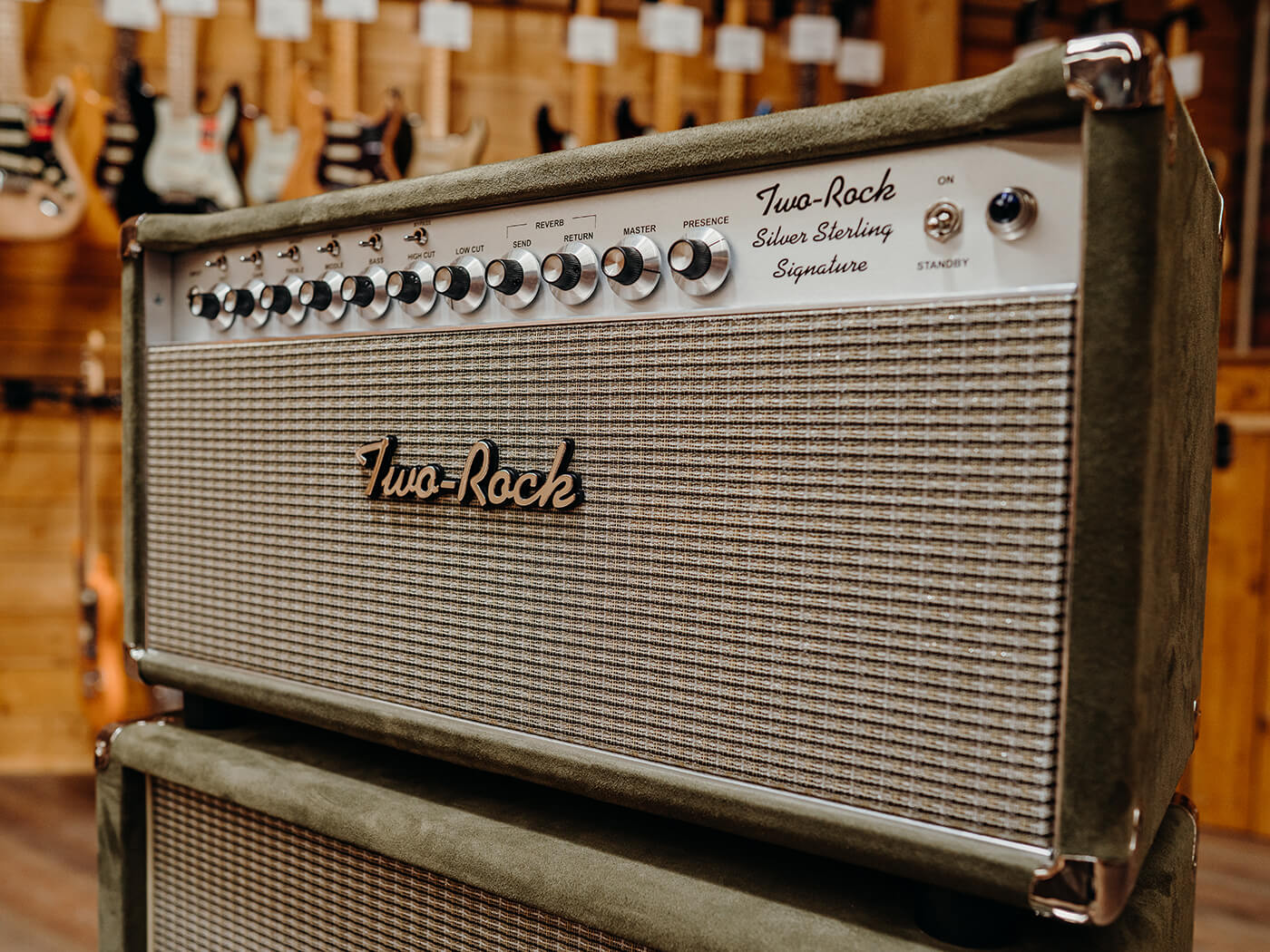
Given that Stevie Ray’s use of Alexander Dumble’s amps later on in his career contributed significantly to the legend surrounding them in modern guitar culture, it’s perhaps no surprise to see our premium rig blessed with an amp from a brand that is hugely respected for its Dumble-style circuits, Two-Rock. Though in this case, the Silver Sterling Signature is something altogether more interesting than a simple ‘Dumble clone’.
“I really like the Silver Sterling Signature because I just love Stevie’s tone on Live At The El Mocambo, which was just Fender amps. Then later on, when he started playing bigger gigs outside, the 40-50-watt Fender amps were never going to give enough penetration in the sound or enough thump in the low-end, so he often blended in a Steel String Singer so he still had that massive thump on the low end and the clarity in the highs.
I’ve chosen the Silver Sterling Signature is because it’s almost the two amps blended into one, so you get that huge headroom that the Dumble amp had, but you still get that sparkle. And of course, it works so well with the pedals, because there’s so much headroom.
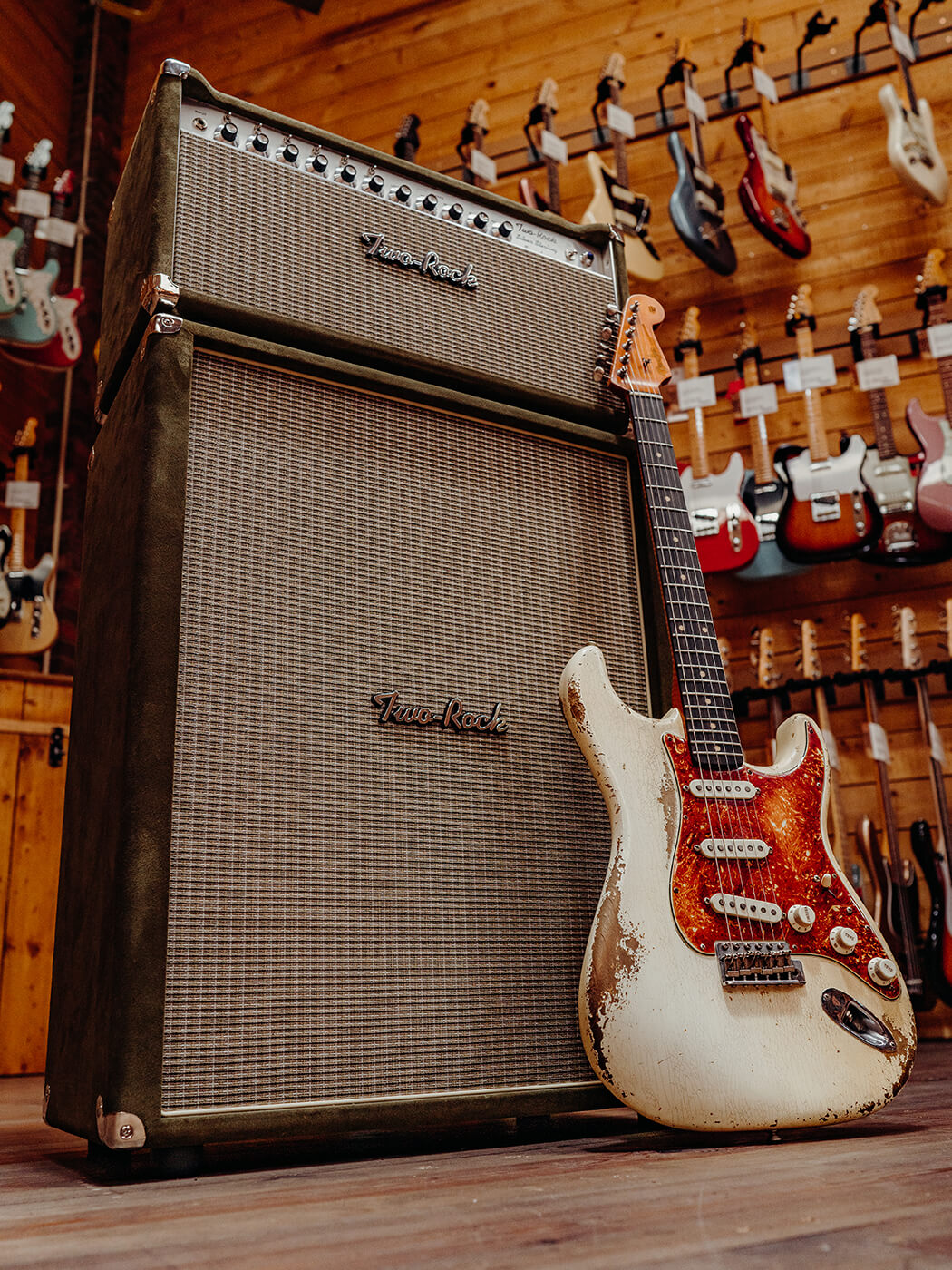
“I’d never call the Two-Rocks Dumble clones, because Eli and the guys over there are just amp nuts, and they love all kinds of amps, not just the Dumbles – Eli’s got a wonderful collection of guitars and amps, and he’s become a good friend since we started selling Two-Rock amps. And we’re both Stevie nuts, so I think if you want that Stevie-style Dumble tone, there’s nobody better than Two-Rock to help you achieve that sound. It’s not an easy sound to play with, but if you put the effort in, that is just the key to that sort of tone. Very little compression, not too much gain, not too much top end, and it just gives you that clarity with lots of bottom end.”
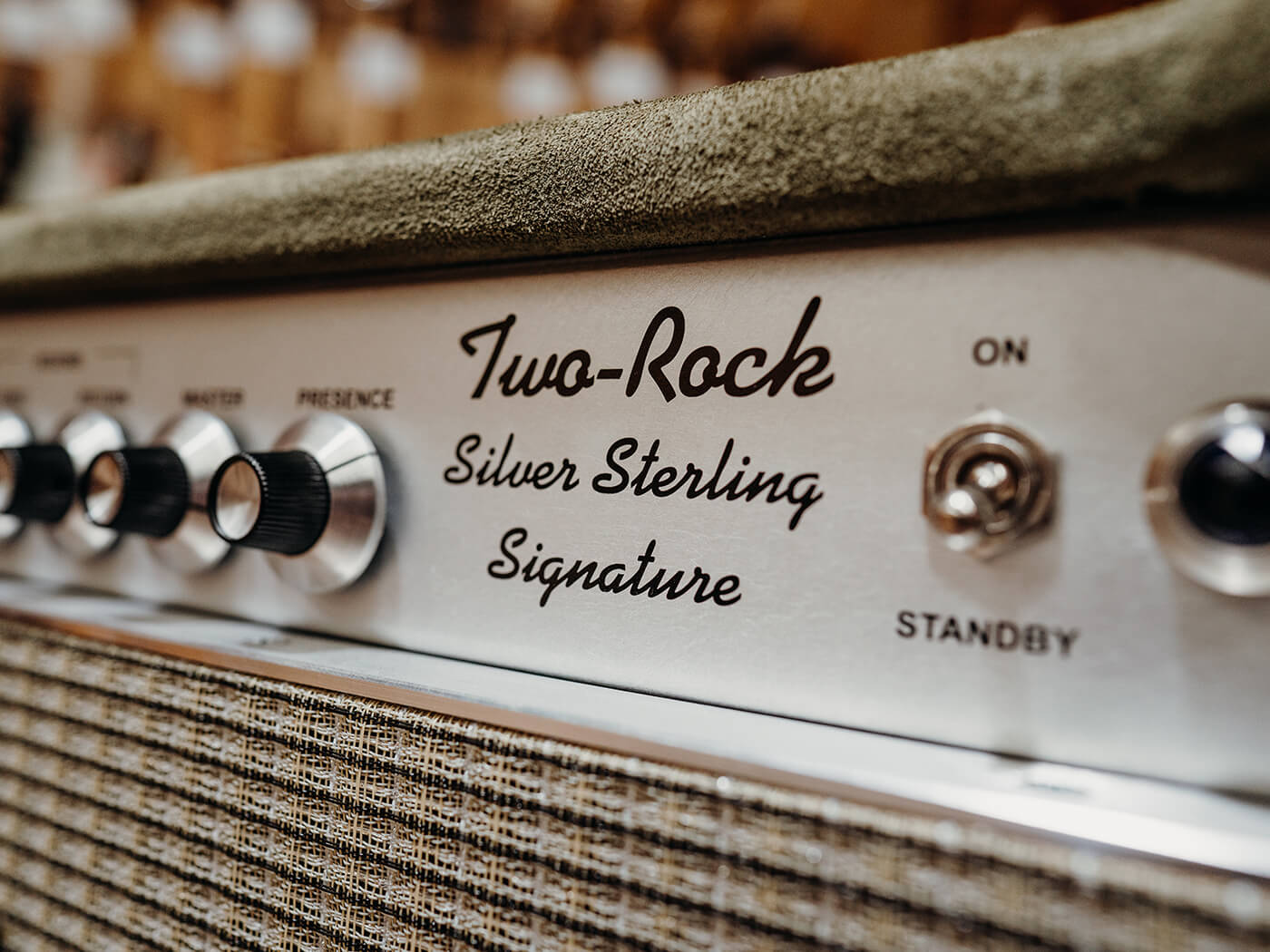
At the other end of the scale, John’s picked out that trusty old workhorse of the gigging world, Fender’s Blues Jr.
“It’s great to have something like the Two-Rock, but it’s 150 watts!” John explains. “So when you’re at home, unless you’re going to attenuate it right down, you’re never going to get anything usable. The Blues Junior is a great little amp, because you really just can play straight into the front end and just roll the volume down if you want it a little cleaner. It’s got a really good ‘clean yet dirty’ base rhythm sound that you can then use pedals to push it with.”
Effects pedals
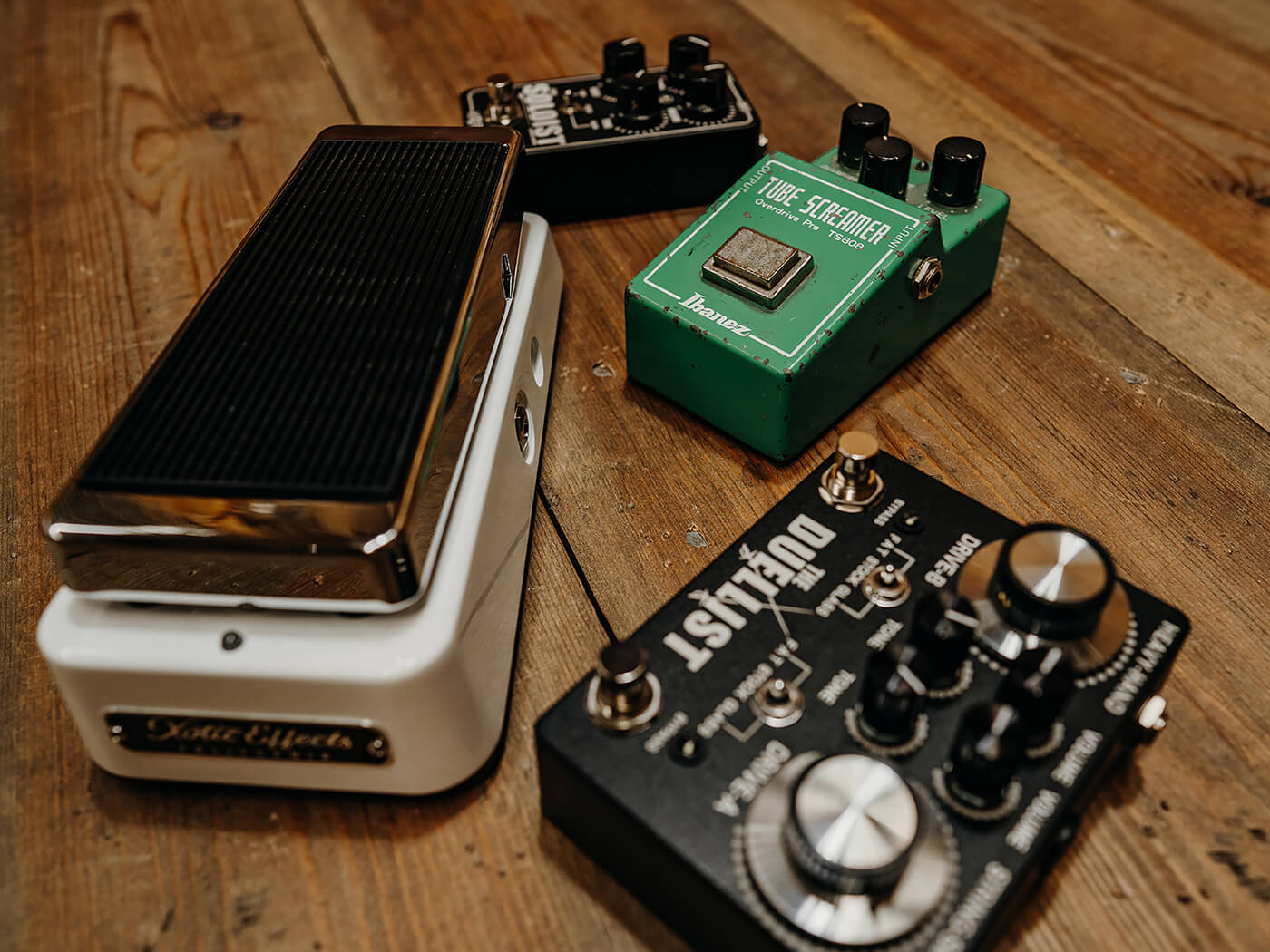
We couldn’t round this out without the effects – after all, Stevie Ray is a big part of why you won’t find many pedalboards without a Tube Screamer on them these days – but when it comes to giving some dirt to our ‘Minted’ rig, John has opted for a pair of pedals from UK builder King Tone, The Duellist and miniFUZZ Si.
“The Duellist is the obvious choice, because Jesse Davey, who’s the man behind King Tone, is another guy like me who has spent years and years trying to nail that tone,” John reflects. “Jesse knows how to listen to a sound and then make a box that can achieve that sound. He goes into the smallest details to make these pedals and achieve that sound – there’s no-one else out there qualified to make pedals like Jesse.
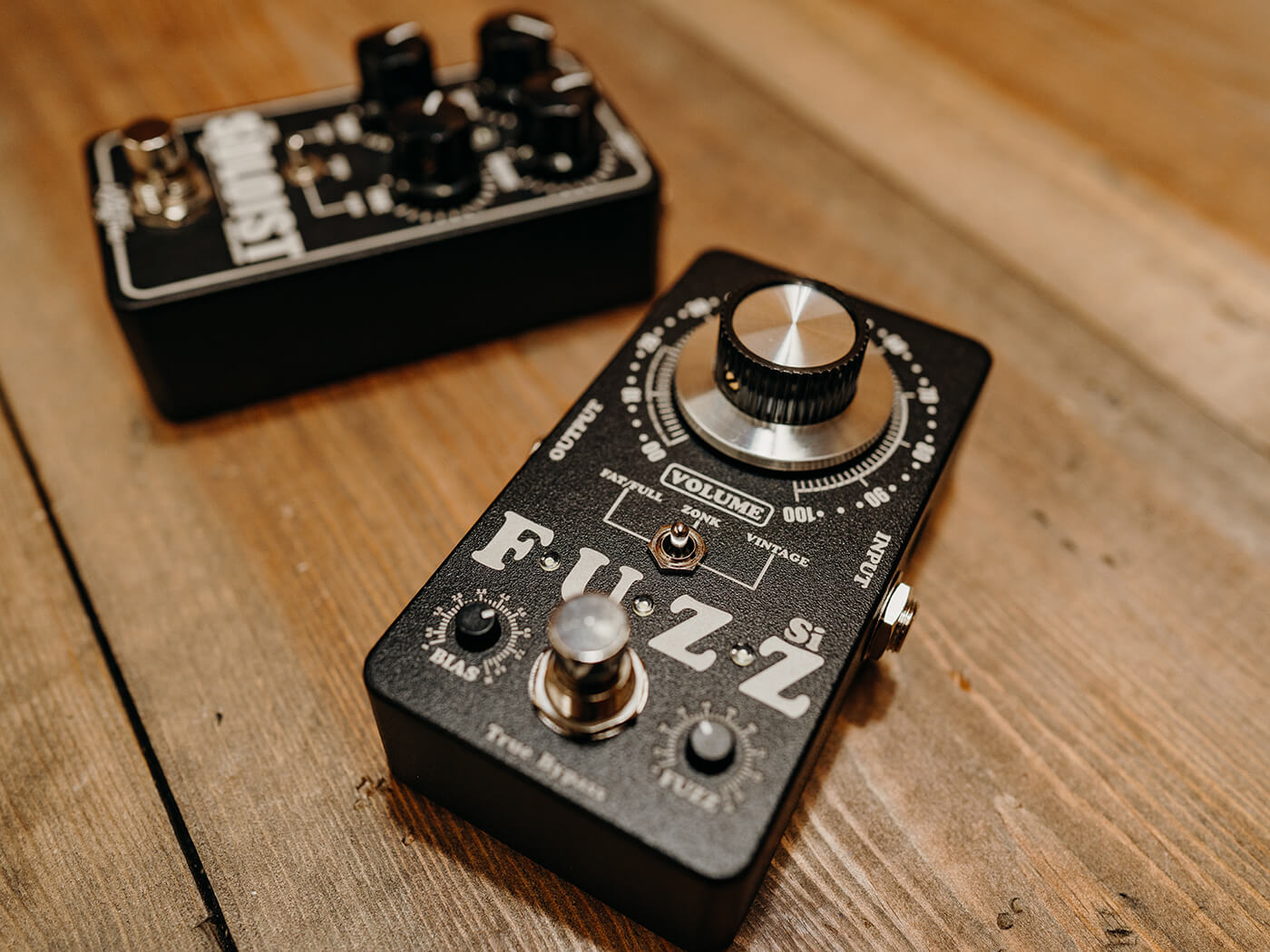
“There are loads of fantastic TS-style pedals out there, and I’ve owned most of them over the years, and I have an original TS-808 as well that I really love. With the Duellist you’ve got those two channels, so you can set so one of them as a boost and the other as an overdrive and really get some great tones out of it.
“Anyone who’s familiar with Stevie’s tone on the 1989 performance from Austin City Limits, you’ll know that it’s quite a raw sounding fuzz, with quite a lot of top end – he still wanted the clarity there as well. So this King Tone is a really good choice of fuzz for me, because it just cleans up so well – and that’s really unusual because people normally go for germanium-style fuzzes when they’re looking for really good roll-off with the volume.”
Wah was another key part of Stevie’s floor-based arsenal, and Xotic’s pedal is John’s choice – but not necessarily because of the large amount of tweaking potential that’s found on board.
“I chose the Xotic purely because it sounds so good out of the box,” he chuckles. “It does have tweakable controls for the bass, treble and frequency range, but with everything on halfway, it just sounds how I want a wah to sound – it’s very vocal, has a chewy sounding treble, the bass isn’t too fluffy… for me it just does it!”
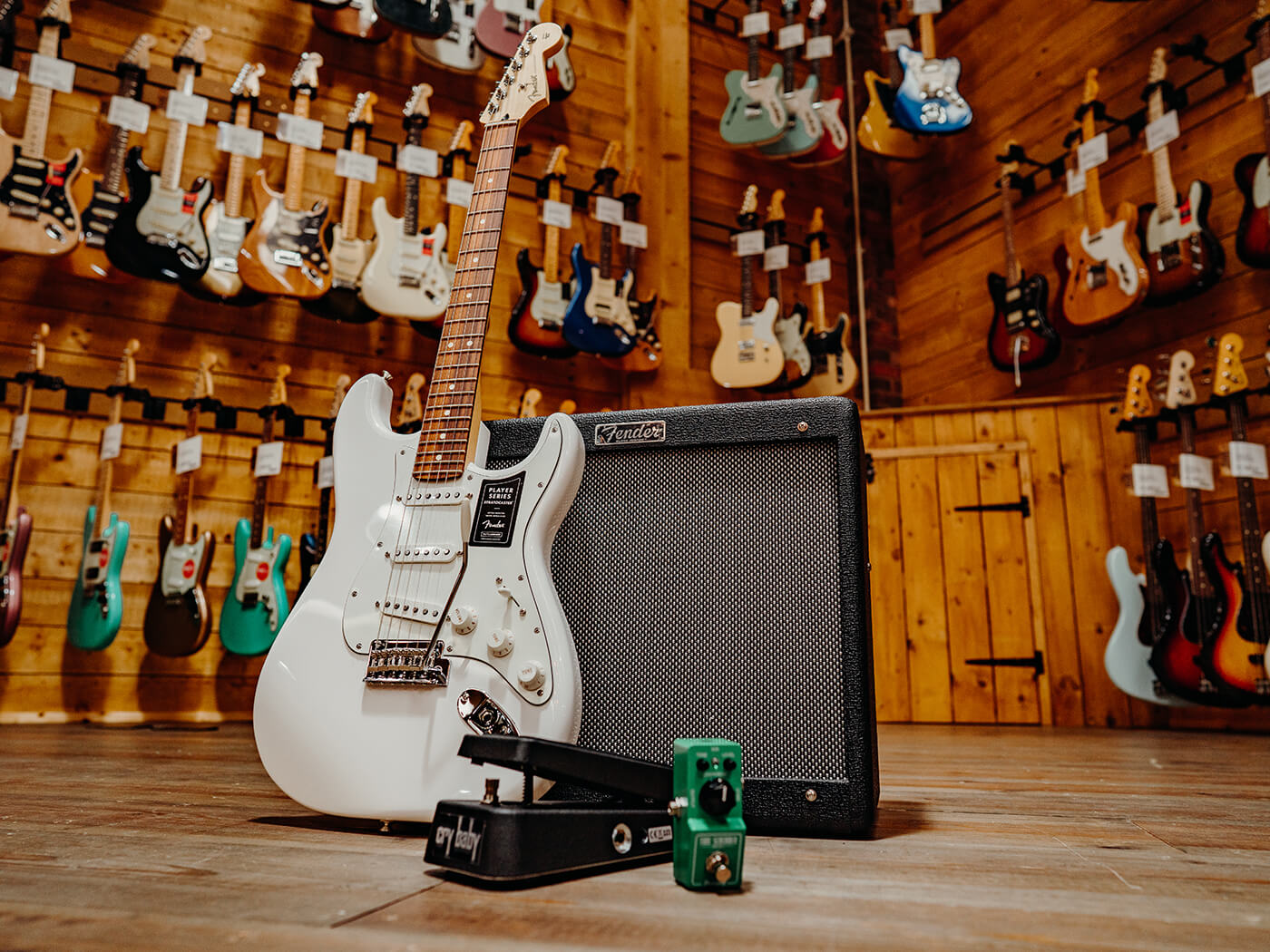
On the more affordable side of things, John has kept things simple and basic, opting for a Dunlop CryBaby wah and that all-important Tube Screamer to nail the tone – in this case Ibanez’s super-affordable mini version.
“I think the TS Mini just sounds great,” John remarks. “For me, I can’t hear that much difference between that, the TS-9 and the TS808 that Ibanez currently make. They’re just great value for money, they work great and it sounds fantastic through that little Blues Jr!”
Minted rig
- Fender Custom Shop 60s Stratocaster
- Two-Rock Silver Sterling Signature
- King Tone The Duellist
- King Tone miniFUZZ Si
- Xotic XW-1Wah
Skinted rig
To check out these rigs for yourself, drop in to Peach’s store in Colchester, or visit peachguitars.com.
